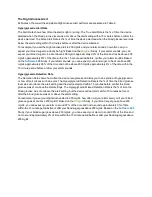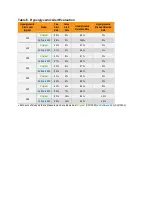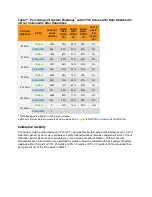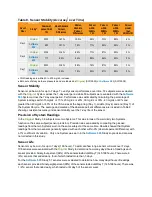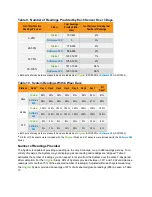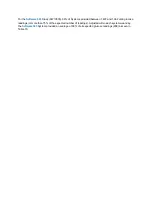
CHAPTER 14: TECHNICAL INFORMATION
14.1 DEVICE PERFORMANCE CHARACTERISTICS
NOTE:
We recommend that you review the information in this chapter with your healthcare provider to
understand how well the Dexcom G4 PLATINUM System performs.
The Dexcom G4 PLATINUM System (the System) uses a glucose sensor to continuously measure and
monitor your glucose levels. The sensor is “calibrated” using a commercially available blood glucose
meter; and once calibrated the System reports glucose readings up to every 5 minutes. The System was
evaluated in a clinical study in which System readings were compared to blood glucose values to assess
its performance and how well the System readings compare to a laboratory test method that measures
blood glucose values. Additionally, subjects performed self-monitoring blood glucose meter tests at home
to assess the System performance in real use environment.
Although the performance characteristics of the System are presented in the following, there is no
commonly accepted statistical approach for capturing performance of continuous glucose monitors
(CGMs), such as the Dexcom G4 PLATINUM System.
Clinical Study Overview
The System performance was evaluated in two separate prospective clinical studies: the
Original
Receiver Software Study (
SW10050
) and the
Software 505
Receiver Software Study (
SW10505
).
Differences between the studies include the number of subjects enrolled, the number of Systems worn by
each participant, the SMBG meter used, and the number of clinic days each subject participated in during
the study. An overview of each study is provided below. Both sets of study data are presented in the
tables that follow and are labeled as
Original
Study or
Software 505
Study from this point forward.
The
Original
Study enrolled 72 subjects, and the
Software 505
Study enrolled 51 subjects. All subjects
had Type 1 or Type 2 diabetes mellitus, and required insulin or oral medication to manage their diabetes.
In the
Original
Study, 83% of subjects had Type 1 diabetes, and 17% of subjects had Type 2 diabetes. In
the
Software 505
Study, 86% of subjects had Type 1 diabetes, and 14% of subjects had Type 2
diabetes. Both studies included subjects greater than 18 years of age.
CHECKING YOUR RECEIVER SOFTWARE VERSION
You can check your receiver for information about your CGM system
at any time.
1. From the Settings menu, press the
UP
or
DOWN
button to scroll to
“Device Info.”
2. Press the
SELECT
button. Information about your sensor session
and system will show.
3. Scroll down to see:
• Serial Number
• Part Number
• Part Revision
• Software Number
• Software Revision
4. Press the
LEFT
button to return to the Settings menu.

















